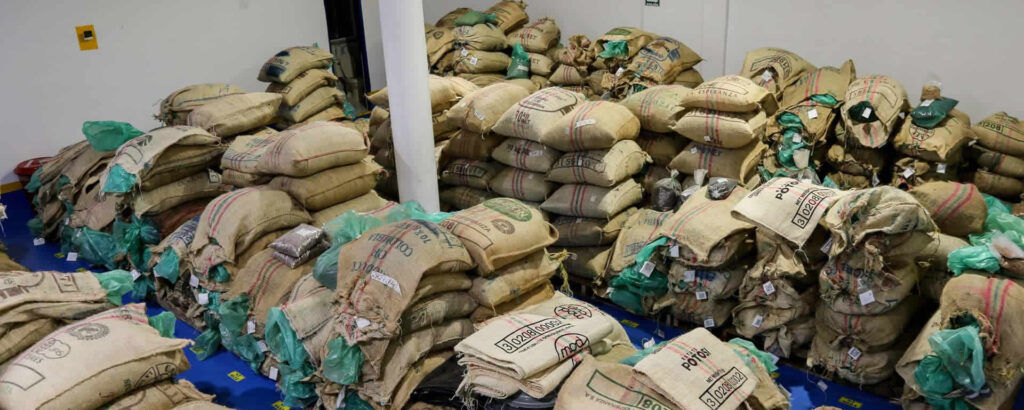THE BENEFITS OF COFFEE STABILIZATION
The stabilization process occurs once the coffee completes the on-farm benefit stage. For specialty coffees, this process lasts between 1 and 4 months, seeking to mature the coffee to an optimal point to highlight its notes in the cup. The process is carried out in fique bags with hermetic bags to guarantee higher conservation of the beans. The conditions where this stabilization process takes place largely define the taste of the coffee and its SCAA score.
In the case of our ally Café Granja La Esperanza, the stabilization process is carried out in two types of warehouses. The cold heated warehouse is characterized by having the air conditioning on 24 hours a day, the 7 days of the week to have an average temperature of 18° C, while the conventional warehouse has an insulating ceiling system that allows an average temperature of 22° C.
In Café Granja La Esperanza, it is defined in advance which are the coffees that will be store in each of the warehouses, this decision is made according to the benefit process carried out on the farm, for example, the washed stabilize very well in lower temperatures (18°C average). While natural coffees stabilize better at higher temperatures.
On the other hand, the stabilization time varies according to the process that the coffee is summited to. On average, the stabilization time of coffees washed at low temperatures is 6 to 8 months, achieving improvements in the profile during this time. Regarding to the coffees under natural process, the stabilization can be more extensive, average between 11 – 14 months.
Before and during the stabilization process, a physical and sensory analysis is carried out, which is applied to each of the samples from the different lots picked.
- The humidity percentage is verified.
- The quakers beans (beans that are not in their optimal state) are selected.
- The mill process is carried out.
- The data from the physical analysis are recorded to determine performance factors.
- A sample of approximately 140 grams of green beans of coffee must be roasted, this process is carried out considering some recommendations that vary according to the variety and the process. It is important to have an optimal roast that does not overshadow the notes or flavors of the coffee.
- Each of the coffee samples must be tasted according to the protocols defined by the SCAA (Specialty Coffee Association).


